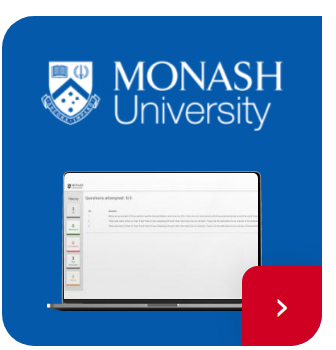LMS in 2021 – learning the way we live
This post looks at the demands on LMS in 2021, the impact of COVID-19 on universities, and provides some insights for the year ahead and beyond.
Over the years, Learning Management Systems (LMS) have evolved from basic course management tools to become student-centric, collaborative learning environments that represent the culture and the community of higher education organisations. In 2019 life was good. Then 2020 hit. It was a game-changer for LMS deliverables. The bar was raised and a new benchmark was set.
COVID-19 impact on the university sector
There is no doubt that COVID-19 has had a greater impact on our lives than any of us could have anticipated or imagined. In the early part of 2020, the business world scrambled to set up staff to work from home (WFH). Digital transformation was catapulted to a number one business priority.
In some respects the impact on the higher education sector was even greater, more tangible; international students who make-up a massive and lucrative component of the Australian student population, fled to their home countries and domestic students returned to their family homes. Many institutions were left floundering and frantically looking for solutions to urgent challenges: How to engage with students who are no longer ever on campus? How can we deliver the 2020 syllabus? How do we run assessments? All these challenges created a huge level of apprehension around the ultimate challenge – how to avoid a catastrophic drop in business revenue.
Delivery of LMS in 2021
2020 taught us that you can never be too prepared. All the business continuity plans that were ever drafted had their day in the limelight, were put into action and pressure tested. The reality is that the demands on the higher education sector will prevail and evolve in 2021 … no mean feat for any IT team to manage and support.
Read the case study and discover how Catalyst IT’s enterprise-level managed service of Moodle LMS supports Monash University

Catalyst IT case study: Monash University – Moodle LMS
Always on – 24/7 availability
If your student population is dispersed around the state, the country or even the world, your LMS technology must transcend time and place, which means it needs to be available and performing 24/7.
Consideration needs to be given to the ability of your IT team on the acceptance of this 24/7 responsibility. Is your team in the position to maintain and support your LMS? Your organisation needs to be able to view your LMS as an educational instrument, not a technical and operational headache. Can the demands of 24/7 supply be met by existing resources? Or perhaps you should consider a managed services model? Maybe even a hybrid model, where you have the best of both worlds?
Real-time interactive engagement
COVID-19 has intensified the student population’s thirst for interactive engagement. Students want to learn they way they live – any time and anywhere. Interactions needs to be immediate and multi-dimensional. Social platforms such as Instagram and Snapchat have set the standard .
The most successful learning management systems straddle personal and educational lives; they consider social needs as well as learning needs. Students of today want to be educated, but they also was to be entertained and inspired … all at the same time. Gone are the days of top-down knowledge sharing.
The need to layer systems and connect or integrate them has also never been greater. No user wants the hassle of managing multiple logins and disparate tools that don’t communicate with each other. It is still surprising to the Catalyst team just how often we see institutions that don’t have a centralised identity management implementation and robust Single Sign On (SSO) process; a single set of access credentials for your suite of learning applications adds simplicity and convenience to the user experience (UX).
Future-proof your business with the the help of Catalyst IT
2020 taught us that flexibility and agility are key success factors for business to survive and thrive. They can provide the competitive advantage that you strive for in your industry.
